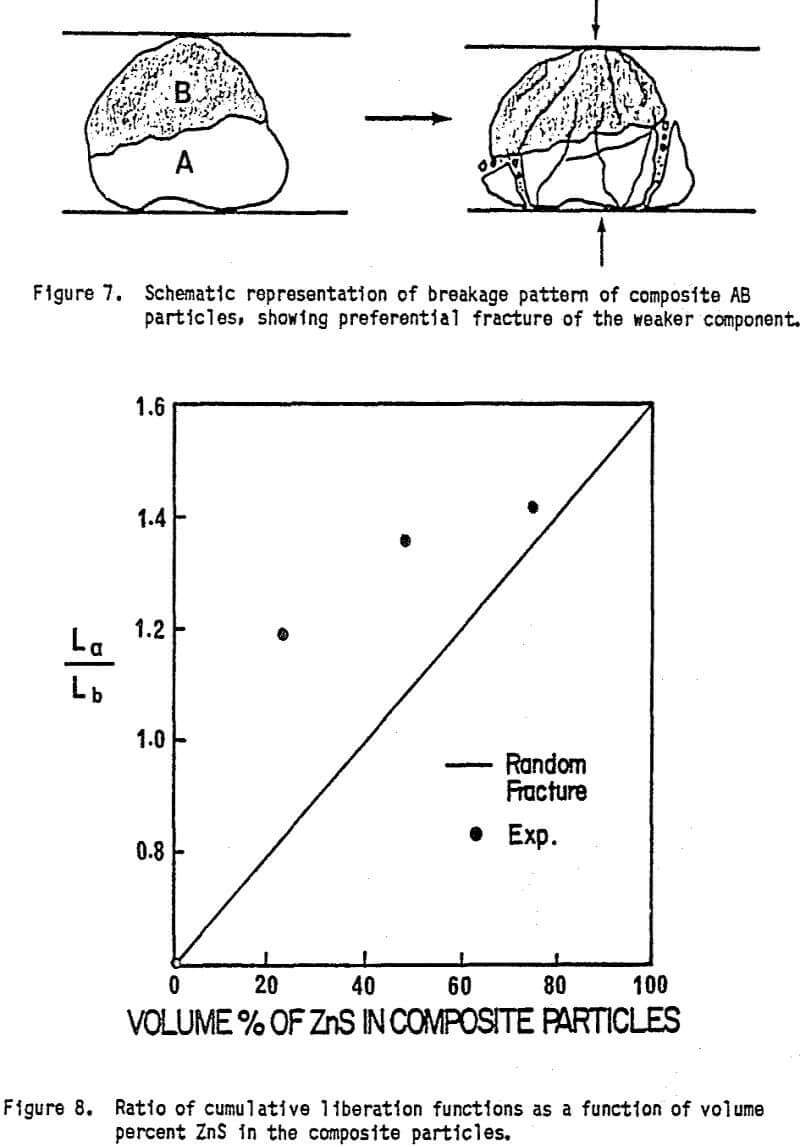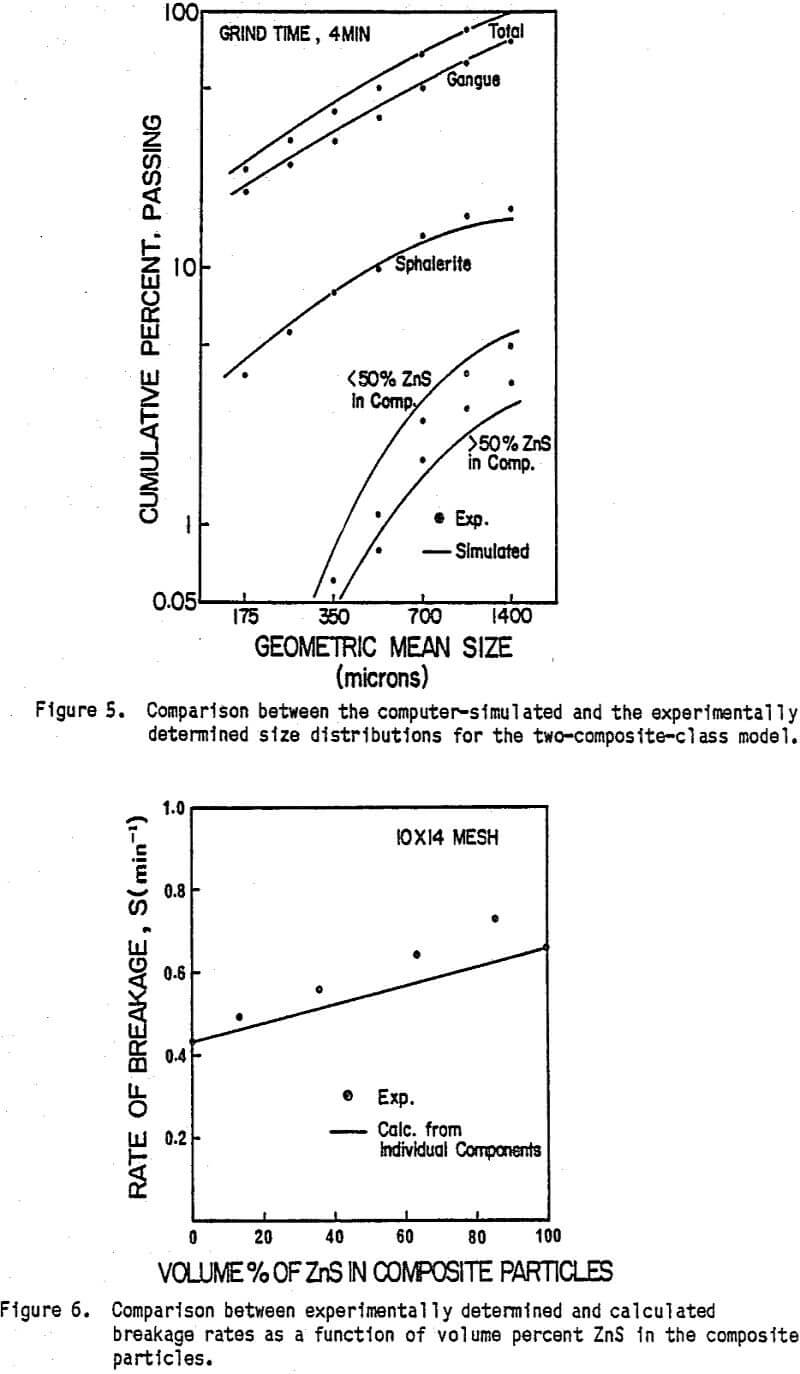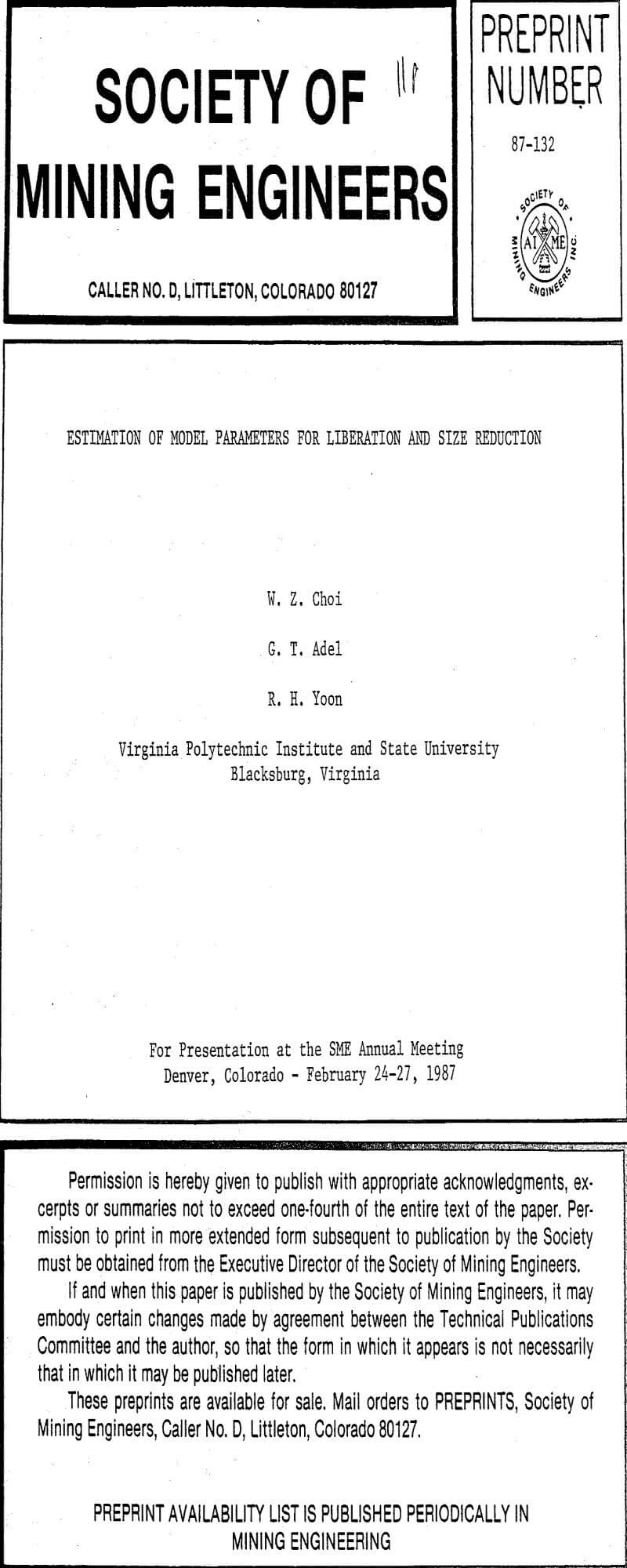It is quite clear from the data shown in the previous section that parameters for a liberation model can be experimentally determined using image analysis techniques, and that these parameters can be used to successfully simulate the liberation process. However, the process of experimentally determining these model parameters is tedious. It could be simplified by using computerized estimation procedures, but then the physical meaning of the model parameters may be lost. Since each of the parameters determined experimentally in the present work has a physical meaning. It is important to understand how these parameters can be used to characterize liberation. Further discussion of two of these parameters, i.e., the breakage rate function and the cumulative liberation function, follows.
Characterizing Liberation Using Breakage Rate
For a binary ore, the breakage rates for the composite particles may be expected to lie between those of the two components, i.e., Sa ≥ Sab ≥ Sb. This be true regardless of whether breakage is considered to be random or preferential. If, on the other hand, the breakage rate for composite material is outside of this range, this would seem to be a strong indication that some type of preferential or enhanced breakage is taking place. The results given in Figure 1 show, indeed, that particles containing greater than 50% sphalerite have faster breakage rates than pure sphalerite. This may be an indication that there is some degree of intergrannular fracture, i.e., fracture along the grain boundaries.
A complete plot of the experimentally determined breakage rates as a function of volume percent sphalerite is shown in Figure 6. It is quite clear from this experimental data that the breakage rates tend to be close to that of pure sphalerite over a wide range of sphalerite contents. This finding seems to further support the Idea of preferential breakage through the sphalerite component for this ore.
If one assumes that the breakage of a composite particle can be approximated by the breakage of a mineral mixture, it is possible to reconstruct the breakage rate for the composite material from the component parts. For example, a coarse-grained binary ore can be considered to consist of two separate particles, as shown in Figure 7. According to mixture grinding theory, when these two particles are trapped between balls or between a ball and the mill wall, the weaker particle will fracture first, and the breakage rate for the mixture will be equal to a weighted average of the component breakage rates.
Using the breakage rates for free sphalerite and free gangue determined in the same environment as the composite particles, the composite breakage rate was reconstructed on the basis of volume percent of each component. The mathematics of this procedure have been shown by Venkataraman (1981) to yield a first order breakage rate for short grinding times. As can be seen in Figure 6, this approximation procedure tends to underestimate the breakage rates for the composite particles. Since the mixture grinding procedure Inherently assumes preferential breakage of the weaker material, it seems that the underestimation by this method lends further support to the preferential breakage of sphalerite in the composite particles.
Characterizing Liberation Using the Cumulative Liberation Function
As discussed previously, the liberation function represents the fraction of primary breakage product which breaks into a different size and composition class. It is mathematically equivalent to a breakage distribution function with the exception that composition does not change for a breakage distribution function. Now if one considers random fracture of a binary particle, the ratio of liberated A to liberated B formed from each breakage event should be equivalent to the ratio in the original particle. If it is not, then some form of preferential breakage is taking place. The ratio of liberated A to liberated B formed from the breakage of a binary particle can be obtained by taking the ratio of the cumulative liberation functions for A and B in the top size class. This ratio is plotted as a function of volume percent sphalerite in Figure 8. The calculated line for random fracture is also shown. Since the ratio of the cumulative liberation functions Indicates that more sphalerite is being liberated than would be expected from random fracture, it appears that this is further evidence for the preferential liberation of sphalerite for this particular ore.
- A parameter estimation procedure has been developed for determining the model parameters for a combined size reduction and mineral liberation model having multiple classes of composite particles. The procedure is based on the determination of the model parameters directly from the experimental data.
- The model has been simulated for the case of two composite particle classes. An excellent fit between experimental data and computer simulated results has been observed for free particles and for the total ore. The fit to the composite material is not as good, but is improved over previous simulations.
- The physical meaning of the model parameters has been discussed in terms of characterizing the liberation process. It has been shown that the breakage rate function and the liberation function can provide useful information on the random and/or preferential nature of liberation.
- In the case of the coarse-grained sphalerite ore being used in this investigation, there appears to be a large degree of preferential fracture through the sphalerite portion of’ the composite particles as grinding proceeds.


